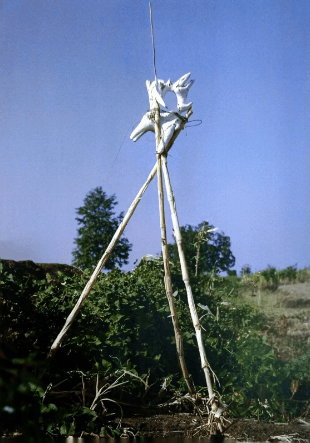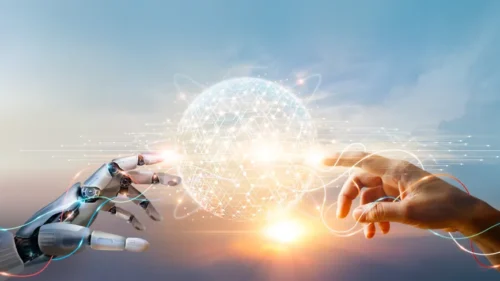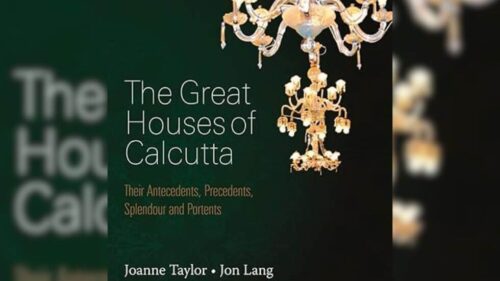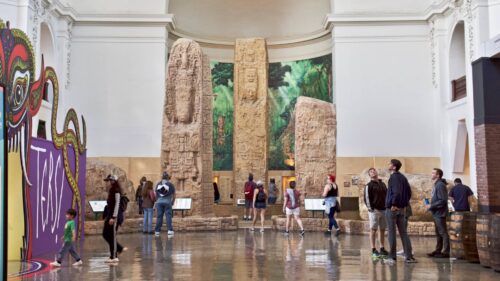When we arrived in the field, we knew practically nothing about the religion of the Chodhri and other Adivasi groups of the region. We had seen their votive offerings in museums and as book illustrations, but all available information in the ethnographic literature and gazetteers on “tribal religion” were so general and vague that we were thrown back on our own experiences. What we then heard and what we then witnessed during the rituals we could participate in was startling, confused us and we must have misunderstood, misinterpreted probably a lot of what we saw and heard. The period of our fieldwork was limited and we cannot claim that we have understood the “system” underlying “the religion of the Chodhris” or that we have grasped the essentials, a kind of “credo”, of their beliefs. We collected a lot of details, and possibly have revealed some insights, but a far more intensive study would be necessary to present an authentic picture of the religious thoughts and knowledge of the thinkers and ritualistic leaders of the Chodhri and Gamit villagers.
Knowledge of supernatural and divine powers and their local manifestation
Goddesses, gods and ghosts are transcendental powers with particular qualities that become powerful at specific moments of time and at specific places and then can interfere in the life of the community or an individual. These powers may be classified in the following manner:
1. Divine powers with sacred places
These are “Mother-goddesses” like Devli-madi, Gumai-mata, etc. and male gods like Ahindro dev, Govaldev, Kalakad dev or Kavadiyo dev. All these divine powers have a local character, i.e. they are worshiped mainly by the people living in the direct environment of their main sanctuary.
2. Divine heroes
Several narratives speak of male and female “creator-heroes” like Koldabio and Kuntarani, who are considered to have been powerful personalities of the past, responsible for introducing new techniques or customs, who, however, don’t receive much worship nowadays and who are by many thought of as being no longer active in this world. But their names appear often in invocations along with deities.
3. Powerful animal gods
The most dreaded animals are tigers, crocodiles and probably also poisonous snakes. They are considered to be spiritual powers with a strong influence on human welfare. They are not only directly destructive with their teeth and claws through attacks on humans and cattle; they can in addition send misfortune, cause but also prevent disaster.
4. Field and disease gods
There are strong supernatural powers whose activities are specialized, i.e. who are like Kakabalio, tough disease-bringers and at the same time healers or, like Himariyo, helpers in agriculture but also destroyers of crops. Contrary to the goddesses and gods with well-known sanctuaries open for worship to everyone, these “local” gods are worshiped everywhere nearby the farm houses and hamlets.
5. Souls of the dead
Because the souls of the deceased are considered to be active powers that can harm the living, they, too, are looked upon as supernatural powers, which need to be given regular attention – at least for some time until they have quieted down and are no cause for disorder anymore.
6. Hindu goddesses and gods
Since the 1950s, Hindu gods and goddesses like Shiva and Ganesh, the Devi, Krishna, Rama and Hanuman replace more and more traditional divine powers. Several bhagats, priests, included in their stories names of gods like Ram, Mahadev (Shiva) or Bhagvan, replacing the ones of local traditions with these names of impressive Hindu gods.
Indigenous voices on divine powers
When a bhagat, a priest and healer like Honio bhagat of Ranveri spoke of an “unspecific deity”, he used the word dev, god, for the divine male and devi, goddess, mata, mother, or the diminutive madi, small mother, for the divine feminine power. Only one bhagat preferred the Hindu term bhagvan and another one used Ram for any male deity in narratives.
Most of these deities, whether they are connected with a well-known sanctuary or are animal gods, field gods or disease gods and goddesses, are present for everyone in the form of stones or natural rocks.
Likewise, Honio bhagat of Ranveri (near Valod) says:
Pathar no dev chhe, pan pathar nathi, god is of stone, but is not the stone.
It is likely that specific stones and rocks stand for divine powers, i.e. mark the spaces where these deities can become manifest; these gods and goddesses, however, “look” different. For them, the rock, where the goddess or god “lives”, is a golden palace, visible only to the devotee during a ceremony. The deity can move at her own will and becomes visible in human form.

Worship site for Himariyo Dev, marked by a terracotta horse offering. Via the Eberhard Fischer Photographic Archive, Museum Rietberg, Zürich.
Religious narratives
Whatever we heard from the bhagats were unconnected bits of knowledge about their own divine powers and their accomplishments, but we are not aware of any well-structured body of sacred knowledge. The stories recited were more entertaining than containing beliefs substantiating moral standards or cultural values.
Creation myths
How the earth had come into existence is told by Radatia Jethia, bhagat from Jamkhadi:
The sun (or Ram) asked karchelo, crab (or Mahadev, Shiva): ‘This flood and water is everywhere. So, what should we do?’ Mahadev-karchelo dug holes all over and the water seeped through these holes and thus the land came into existence.
How human beings and animals were created, Honio bhagat narrated:
(Once) Bhagvan sent two legs, two feet and one nose to the earth. They arrived separately. And he combined them here. One man and then one woman were made, in the same way. Both of them got together. By this the family grew, it became larger and larger.
Mulji Khura, bhagat from Khumbia tells another version:
Raja Bantol and Balvindhan made two statues of clay and gave them life. That is how we (humans) came into existence. Balvindhan and those people painted dots on stones and by that Ahindro (dev) and Kavadio (ghosts) came into existence. The first rain fell on Kalakakad.
[Niyogi Books has given Fair Observer permission to publish this excerpt from Art for Tribal Rituals in South Gujarat, India: A Visual Anthropological Survey of 1969, Eberhard Fischer and Haku Shah, Niyogi Books, 2021.]
[Lee Thompson-Kolar edited this piece.]
The views expressed in this article are the author’s own and do not necessarily reflect Fair Observer’s editorial policy.
Support Fair Observer
We rely on your support for our independence, diversity and quality.
For more than 10 years, Fair Observer has been free, fair and independent. No billionaire owns us, no advertisers control us. We are a reader-supported nonprofit. Unlike many other publications, we keep our content free for readers regardless of where they live or whether they can afford to pay. We have no paywalls and no ads.
In the post-truth era of fake news, echo chambers and filter bubbles, we publish a plurality of perspectives from around the world. Anyone can publish with us, but everyone goes through a rigorous editorial process. So, you get fact-checked, well-reasoned content instead of noise.
We publish 2,500+ voices from 90+ countries. We also conduct education and training programs
on subjects ranging from digital media and journalism to writing and critical thinking. This
doesn’t come cheap. Servers, editors, trainers and web developers cost
money.
Please consider supporting us on a regular basis as a recurring donor or a
sustaining member.
Will you support FO’s journalism?
We rely on your support for our independence, diversity and quality.







Comment